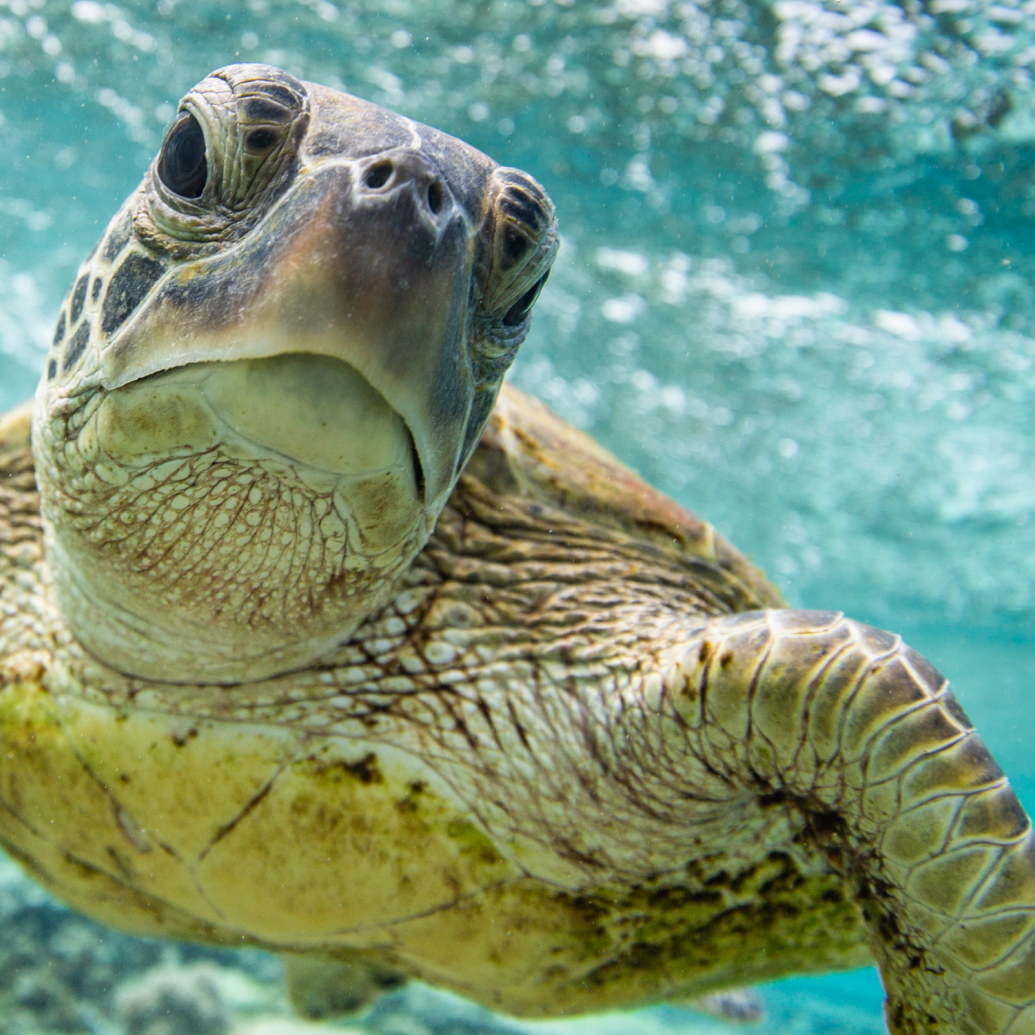
Underwater, Up Close, and Personal
From tiny hatchlings smaller than the palm of your hand to full-grown adults reaching up to 400 pounds, mysterious and majestic sea turtles rank high among world’s most captivating seafarers. With the release of the new Protect Sea Turtles stamps, the U.S. Postal Service celebrates the protection of these fascinating, awe-inspiring creatures.


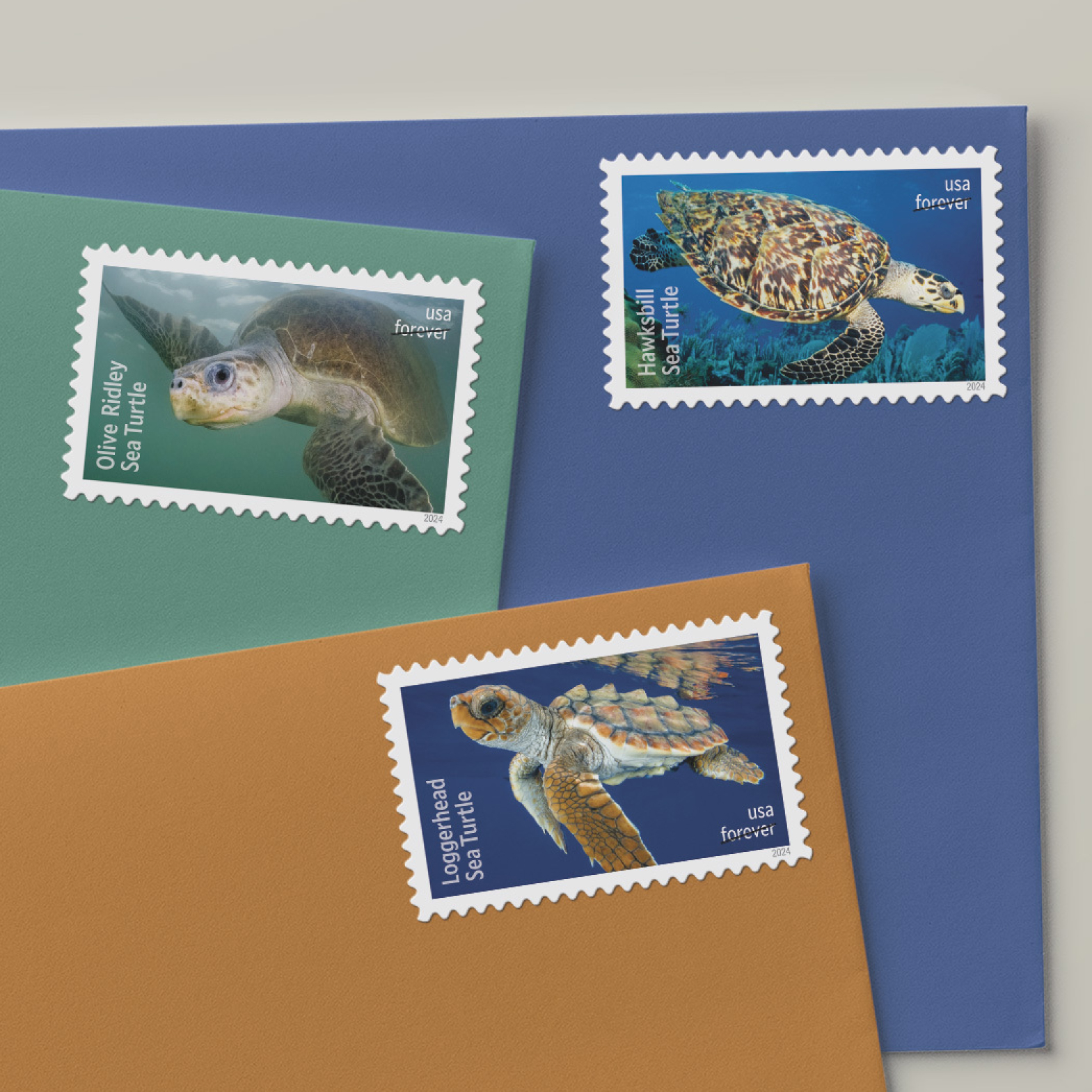
Sea turtles are some of the oldest animals in the world. For the past 100 million years, these ancient mariners have swum the oceans, often traveling vast distances to nest and feed. All seven species of sea turtles share some common characteristics: They are streamlined for their life in the oceans, are cold-blooded, and breathe air. They also lay their eggs on sandy beaches, where the temperature of the sand, not genes, determines whether the hatching will be male or female. In general, eggs that incubate in warmer temperatures will produce more female turtles, while those developing in cooler will produce more male turtles. Between those high and low temperatures, hatchlings are a mix of males and females.
The six species appearing on the stamps, each captured by a different photographer, are the loggerhead, leatherback, Kemp’s ridley, olive ridley, hawksbill, and green sea turtle. All of them are listed and protected under the Endangered Species Act and depend on United States coastal waters for foraging and migratory habitats during various stages of their life.
They’re remarkable creatures, and I think they are excellent ambassadors for the ocean.
Sea turtles still face many dangers. Human activities have caused their populations to decline, threatening them with extinction. The primary causes of these declines are bycatch in fishing gear, alteration of nesting beaches, trade in eggs, meat, and shells, boat strikes and, more recently, climate change.
Fortunately, there are many things that individuals can do directly to help sea turtles. Become a responsible seafood consumer by asking where and how seafood was caught. Choose seafood caught in ways that do not harm or kill turtles. Beachfront lights can also disorient nesting turtles and hatchlings, causing them to head inland rather than back to the open sea. Minimize beachfront lighting during nesting season by shielding, redirecting, or turning off lights, and refrain from the use of flashlights or flash photography while on the beach.
On visits to beaches where sea turtles nest, beachgoers should take care not to disturb the nesting sites. During nesting season, removing recreational equipment and keeping the beaches clear of debris and obstacles will allow nesting females and hatchlings to freely move to and from the water. In areas where sea turtles are present, boaters should be aware that turtles regularly come to the surface to breathe. Boating at safe speeds helps to reduce the likelihood of striking a sea turtle.
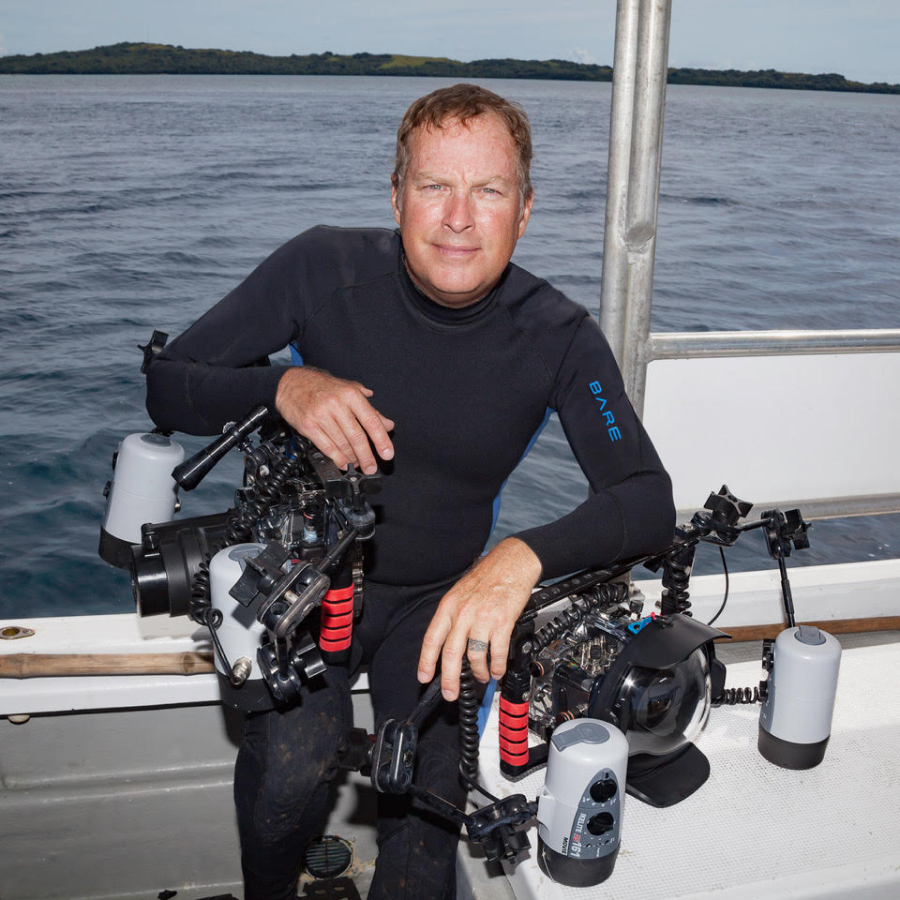
Photographer David Fleetham, who has photographed many green sea turtles in his lifetime, has witnessed the difference that conservation efforts can make. After green sea turtles became a protected species and conservation efforts helped the population grow, they began returning to Hawaiian shores to bask on the sand. “Before that, it was very rare to see a turtle basking,” he says.
Fleetham has seen many amazing sights over the years while photographing sea turtles. On one occasion in the Pacific Ocean, he stumbled upon about a dozen sea turtles in the water below him. They were all visiting a reef “cleaning station,” as they are sometimes called, where turtles may rest and have algae and other tiny hitchhikers nibbled off their shells by surgeonfish and other marine fish. “Spontaneously discovering an entire community on the back of a sea turtle and taking care to view the turtle from a respectable distance is what you wait for,” he says. “It’s a really good feeling.”
Fleetham also photographs all manner of underwater fauna — from stingrays to starfish — but he’s particularly excited to see one of his sea turtles on a stamp. He believes there’s no better animal to communicate the importance of protecting marine environments. “Everybody loves turtles,” Fleetham says. “They’re remarkable creatures, and I think they are excellent ambassadors for the ocean.”
[Sea turtles] have been around for millions of years. They really have survived a lot, as endangered as they are in our current climate.
Art director Derry Noyes wanted the Protect Sea Turtles stamps to swim with a rich array of textures, colors, and shapes, like the ocean itself. This meant that in addition to turtle portraits like Fleetham’s, she included other views of the majestic creatures, like the shot of the hawksbill, with its strikingly mottled shell, gliding through the frame at a diagonal.
Over the years, Noyes has become an expert in designing stamps that feature endangered animals, and she’s found close-ups to be an effective approach. Endangered Species, which still has associated products for sale at the online Postal Store, includes 20 striking portraits of different creatures. The upcoming Save Manatees stamp shows an expressive illustration of this endangered marine mammal in its ocean habitat while the Save Vanishing Species stamp features a bold illustration of an Amur tiger cub looking directly at the viewer.

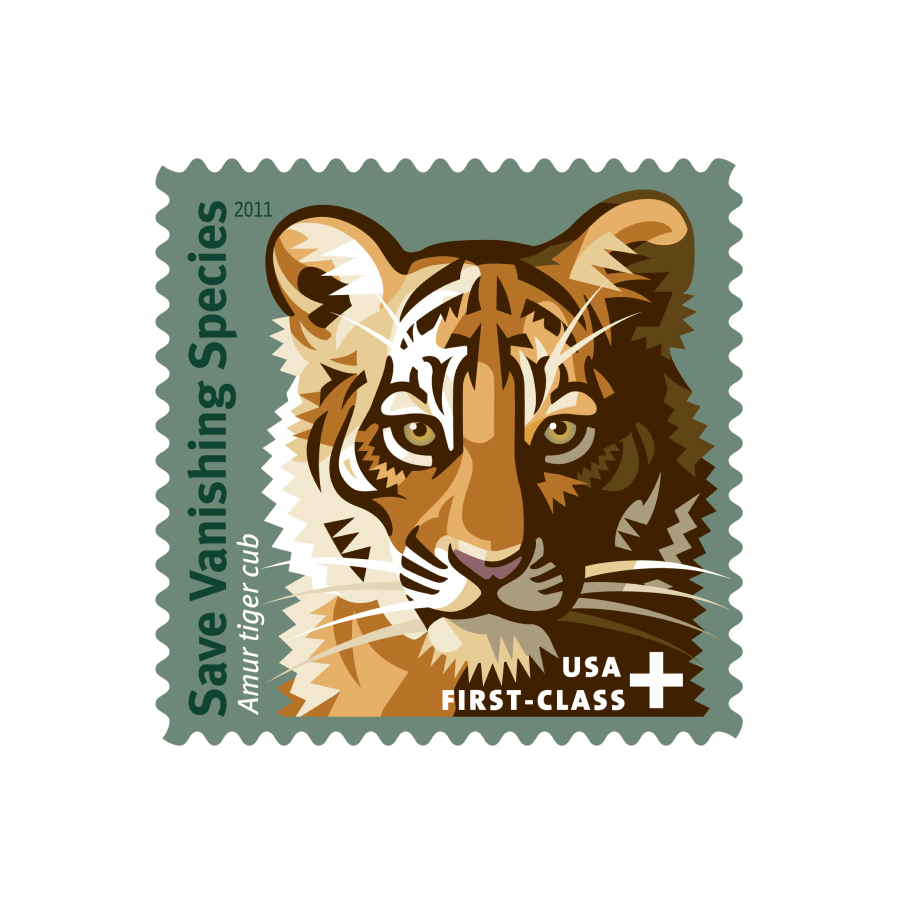
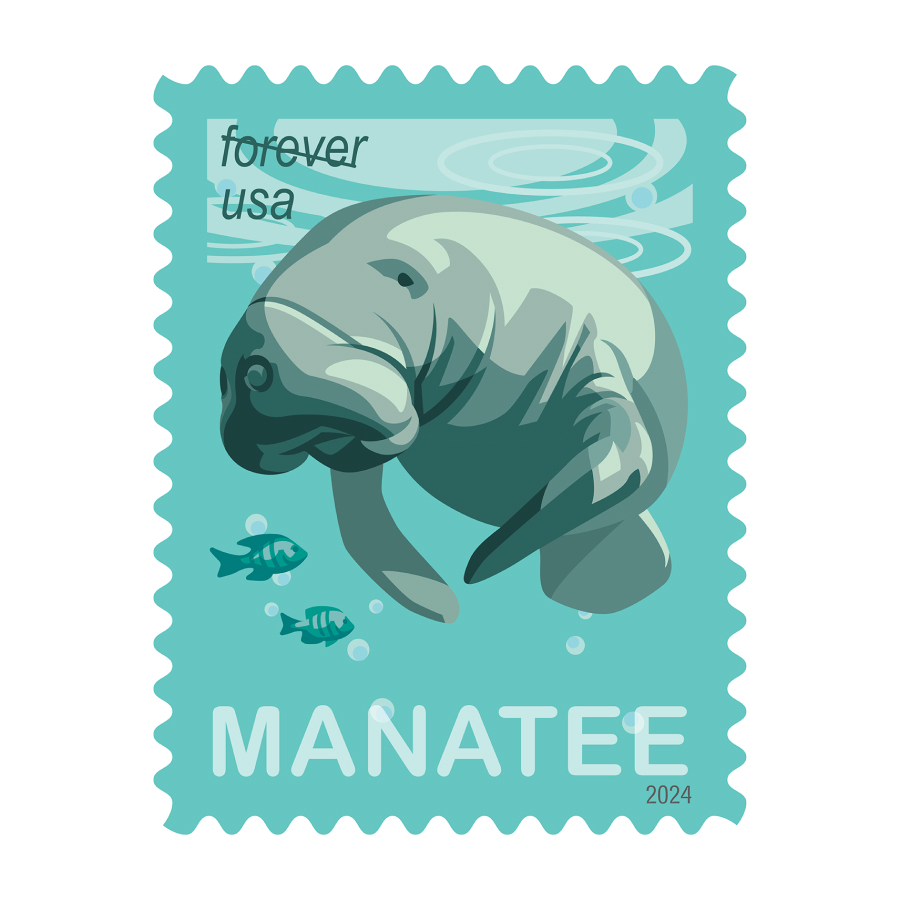
More than 67 million of the Save Vanishing Species stamps have been sold as of the end of January 2024, bringing the total revenue raised by this stamp for wildlife conservation to more than $7.9 million. Noyes hopes these intimate portrayals will inspire stamp viewers to learn more about endangered wildlife and support conservation efforts. When it comes to creatures we’ve never encountered ourselves, “perhaps we’re all just a little bit oblivious,” she says. “If only we were more knowledgeable about these animal beings around us, I think we’d be more careful.”
Noyes agrees with Fleetham that something about sea turtles inspires awe and delight.
“They’ve been around for millions of years,” she says. “They really have survived a lot, as endangered as they are in our current climate. And whenever you can bring attention to animals like that — even in the smallest way — it’s a gift.”